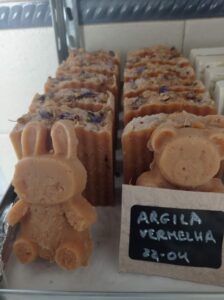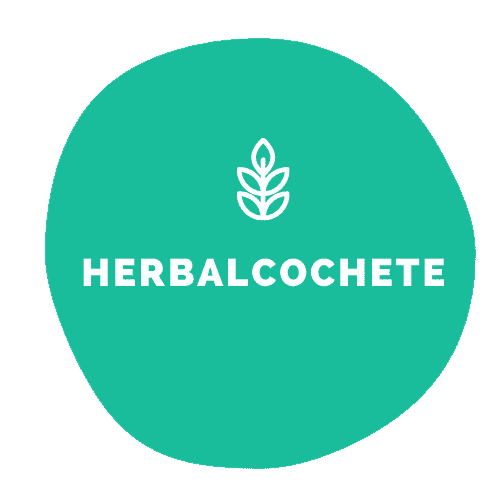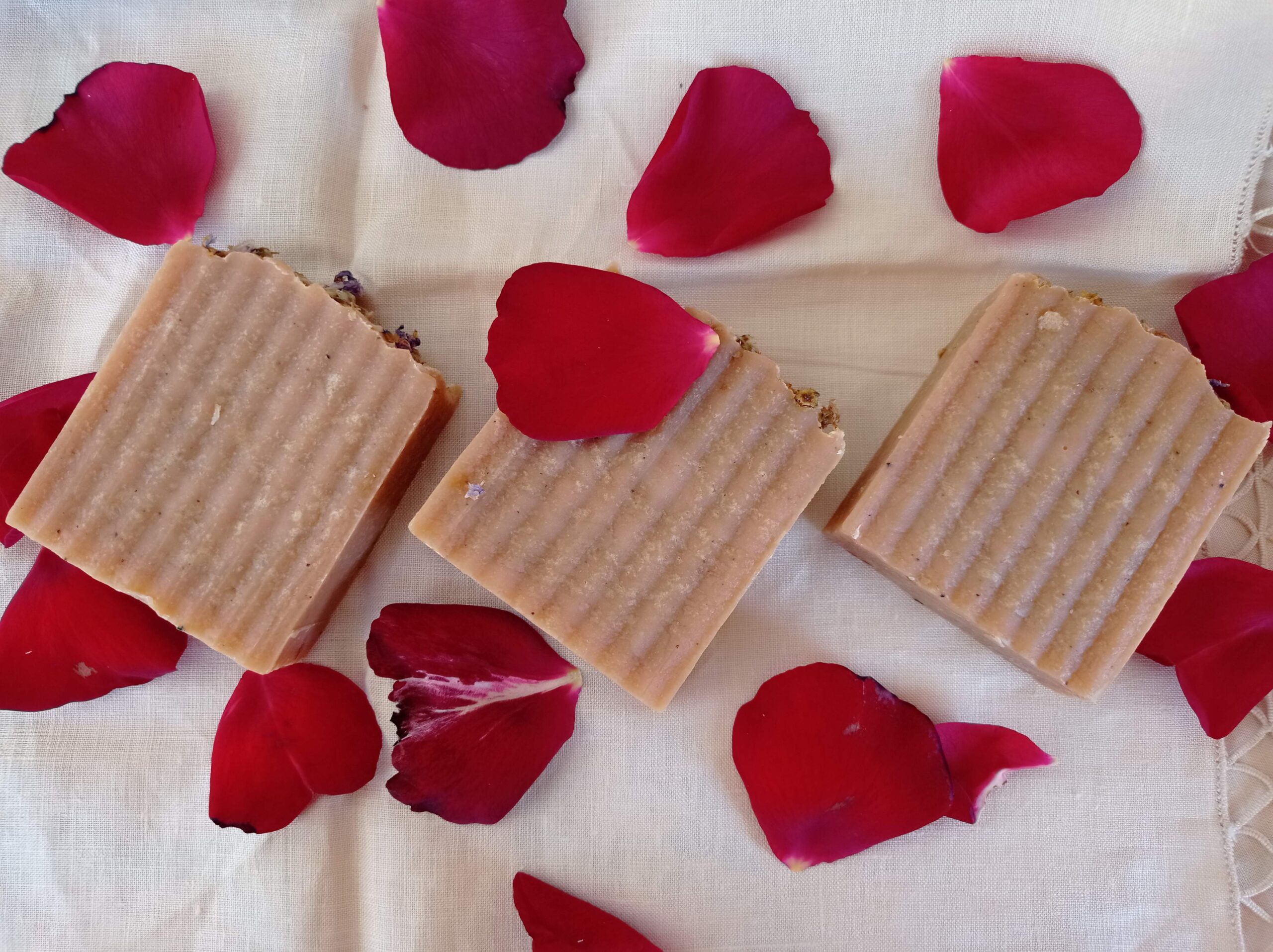This red clay soap recipe with horse chestnut is a cold process 2-oil soap recipe, coloured with red clay, enriched with horse chestnut extract, and scented with a fragrance oil of roses. The yellowish color of olive oil and the red clay combined to give this soap a more brownish color than the red/earth one I was looking for.
Still, the soap, decorated with mallow flowers, has a very pretty and rustic look. The mix of soap salts and the fragrance oil gives this soap one of the most old-fashioned, wonderful soap scents I’ve ever smelled on my homemade soaps.
Table of Contents
- What Is Red Clay Soap Good For?
- Is Clay Drying In Soap?
- What Is Horse Chestnut Extract Good For?
- Red Clay Soap Recipe with Horse Chestnut Extract
- Find Where To Buy Handmade Red Clay Soap
- How To Use This Soap
- Related Posts
- Watch This Video About Safety
- Cold Process Soap Making Tutorial Video
- Cold Process Soap Making Lessons
What Is Red Clay Soap Good For?
The red clay I use in this recipe is an illite clay. Like green illite clay, the red illite clay is very efficient at removing dirt, oils, and toxins from the skin. Best used for oily skin types, illite clays make excellent cleansers, masks, and detoxification treatments. Its red color comes from the iron oxides present in the mineral compounds.
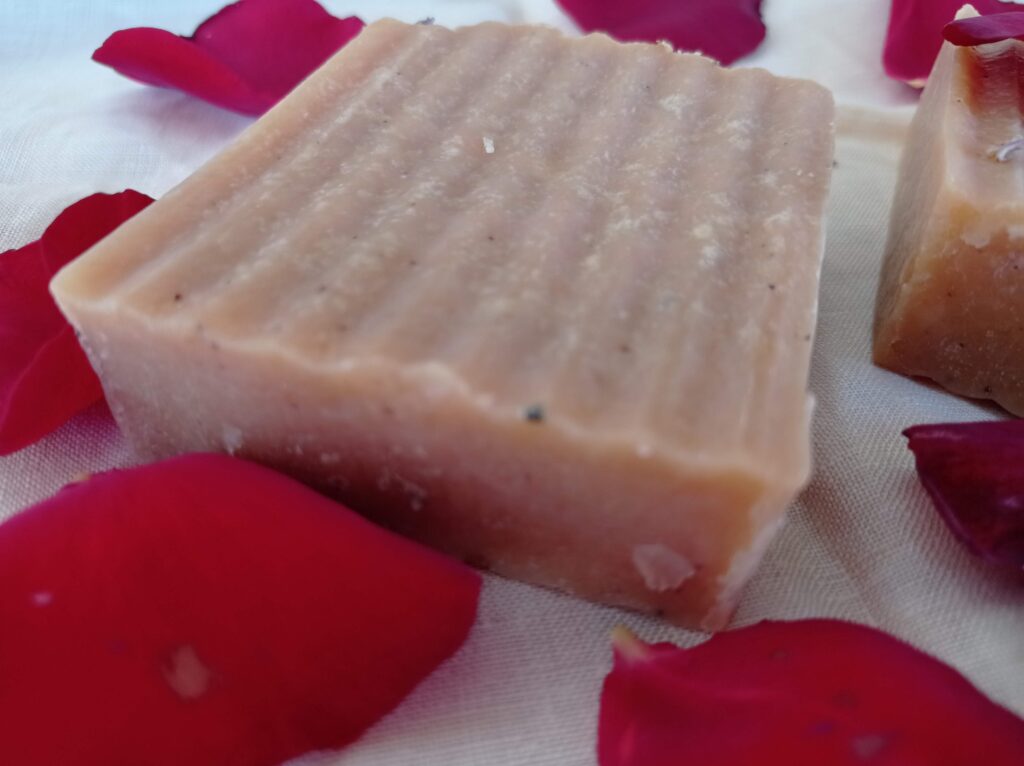
In soap, red clay not only helps to remove oil and dirt, but also increases lather, adds exfoliation and provides a natural color. This soap can be used in all types of skin but it’s best suited for oily skin. Clays are generally added to soaps at a rate of 1 tablespoon of clay per pound of soap (450g).
Is Clay Drying In Soap?
Using too much clay in soap or on skin too often can be drying. Some clays are better than others for certain skin types. Red clay is among the most drying ones, therefore, it is best suited for oily skins. Still, continuous usage might dry your skin, therefore, use this soap along with a more hydrating one, and moisturize your skin with lotions.
I use 2 teapoons of red clay in this soap batch of 1Kg, but if you are afraid of a too much drying soap, start with 1 teaspoon for 1 Kg, and see how it goes.
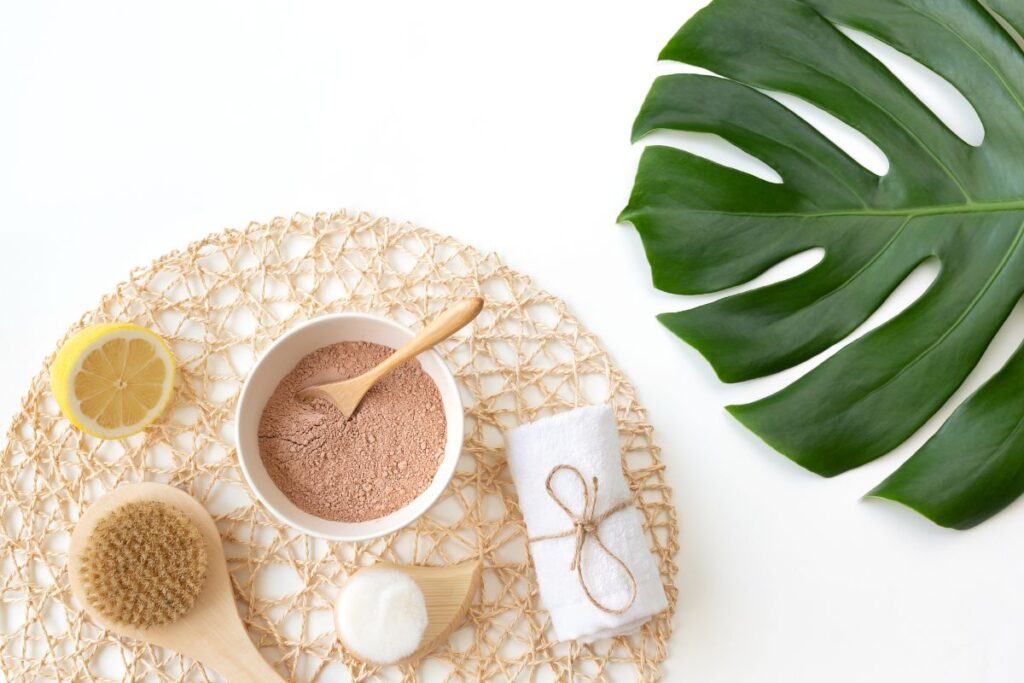
if you have naturally dry skin, stay away from red and green clays, and use pink or white kaolin, much milder clays. White kaolin helps to stimulate circulation to the skin while gently exfoliating and cleansing it. It does not draw oils from the skin, so it can also be used on dry skin types without negative results. The gentlest of the clays, French white clay powder is cleansing, soothing and softening.
I get along very well with pink clay, where I make a mask with yogurt and rosehip seed oil. The maks feels wonderul, very cleansing and mildly moisturizing.
What Is Horse Chestnut Extract Good For?
This ingredient was an addiction to this soap simply because my horse chestnut extract was reaching its best by date. While I don’t believe very much in plant extract properties at its full force in cold process soap, due to saponification, I will try this soap once it’s cured and see how different (or similar) it is from other soaps made with similar oils.
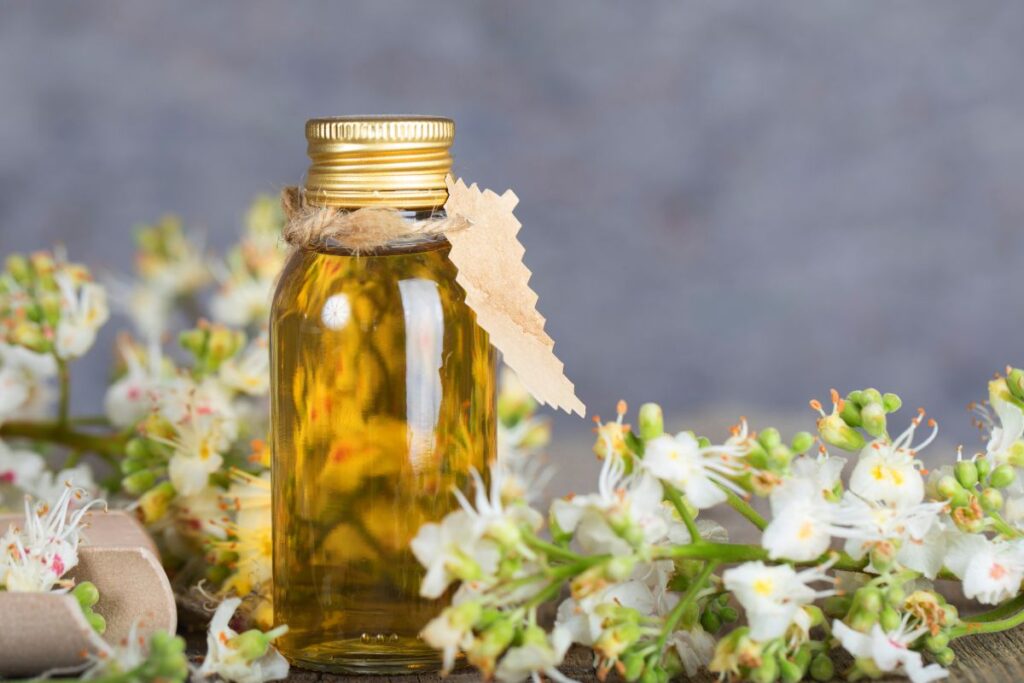
Horse chestnut extract is a natural medicin for varicose veins, where I use for that exact purpose in this lotion. WhiIe I don’t have the pretense of “selling” this as a medicin, and in no way it should replace a doctor’s prescription, the lotion does help with varicose veins. However, horse chestnut is most effective when taken as a food supplement. Horse chestnut is also known for working as an anti-aging ingredient, due to its anti-oxidant and anti-bacterial properties.
However, this is an optional ingredient in this soap: you can simply remove it from the recipe if you don’t wish to spend more money in yet another special ingredient.
Are Horse Chestnuts Poisonous?
Horse chestnut (Aesculus hippocastanum) is a tree. Horse chestnut contains significant amounts of a poison called esculin and can cause death if eaten raw. Raw horse chestnut seed, bark, flower, and leaf contain esculin and are unsafe to use.
Signs of esculin poisoning include stomach upset, muscle twitching, weakness, vomiting, diarrhea, depression, and paralysis. Seek immediate medical attention if you’ve accidentally consumed raw horse chestnut.

Horse chestnuts have saponins in its composition and are known to work as soapnuts to replace your laundry detergent. Find here how to make laundry detergent using horse chestnuts, also known as conkers..
Red Clay Soap Recipe with Horse Chestnut Extract
This recipe uses only two oils, the most common in soapmaking: coconut oil and olive oil. Along with red clay, horse chest nut and a wonderful rose fragrance oil, the result is a rustic, pretty and delicately scented soap. The scent, a mix of a rose fragrance oil and soap salts, is one of my favorites in soap.
I am yet to try this soap, as it is still curing as I write this post. But I will update it soon with a review of the resulting soap.
Try this recipe and enjoy your homemade soaps!!!
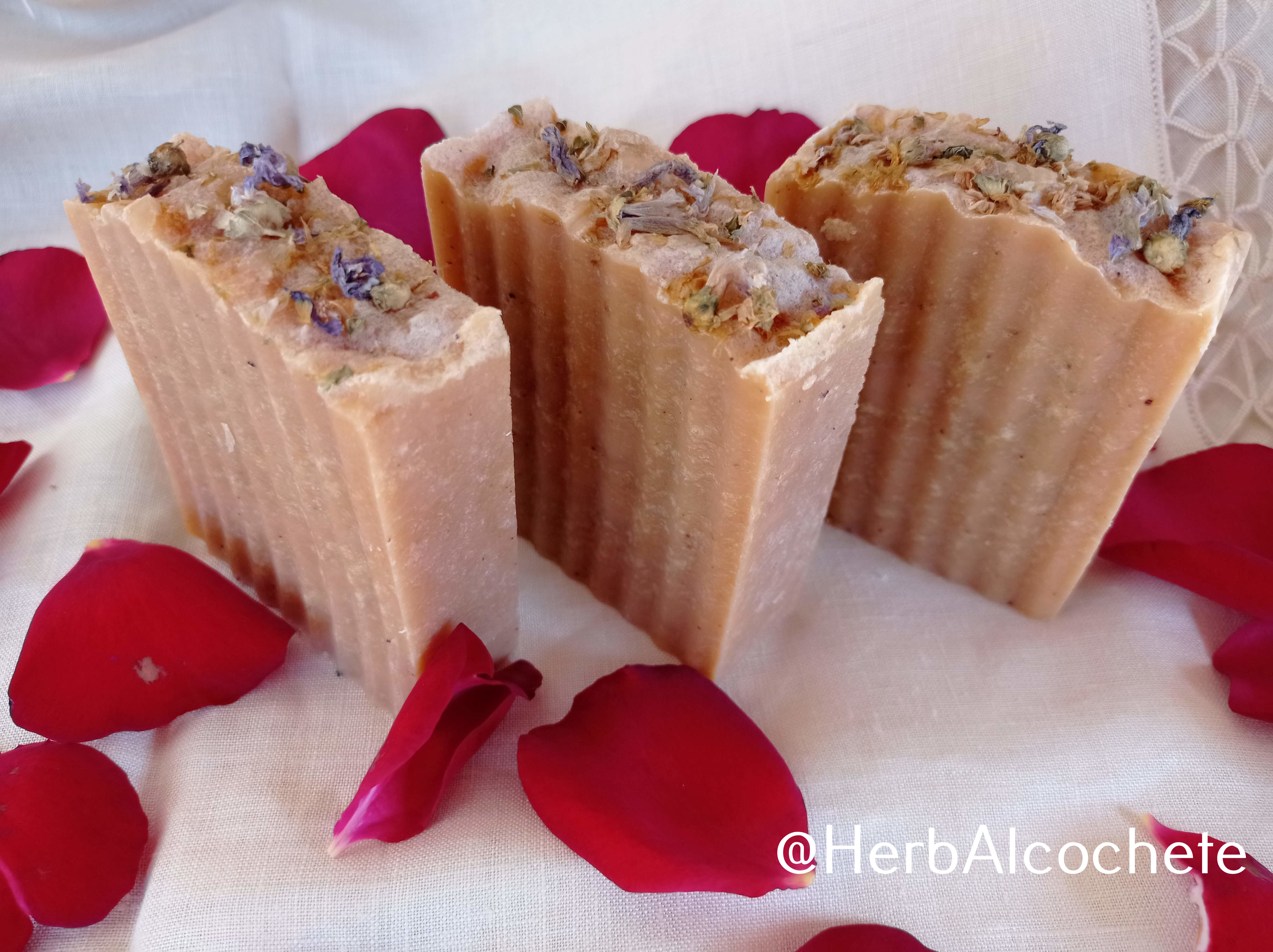
Find Where To Buy Handmade Red Clay Soap
Still not inspired to make your own soap at home? But you do wish to use or give it a try at a wonderful handmade soap with red clay? You can find a few options online to buy handmade soap below:
- French Lavender and Red Clay Soap (Etsy)
- Morrocan Red Clay Soap (Etsy)
- Morrocan Red Clay Facial Bar (Etsy)
Morrocan Red Clay Soap (Etsy)
How To Use This Soap
In the shower or bath, wet your hands and rub your soap in them to create a lather. Wash your hands first, then repeat the process and apply soap to your whole body using the soap directly and your hands. You may also wash your face with it. Rinse hands and body abundantly. Also wash your soap from lather before placing it in your soap dish or bag saver.
Washcloths and sponges should be avoided. Avoid washing your intimate zone and your hair, soap pH in not adequate for those parts of your body. Avoid eye contact with soap to prevent stinging. Make a patch test before using your soap. Stop using your soap if you feel any immediate adverse reaction in your skin (red skin, rashes, itching).
To take best advantage of your handmade soap (made by yourself or store-bougth), read How Do You Use Handmade Soap?
Related Posts
Ingredients and Recipes
- Vegetable oils: Oil Properties For Soap Making
- Essential oils: Best Essential Oils for Soap Making
- Colorants: How To Color Your Soap With Kitchen Ingredients
- Beginner Recipes: Soap Recipes for Beginners
- Cold Process Soap Recipes: Free Cold Process Soap Recipes
Soap Making Techniques and Troubleshooting
- Cold Process Tutorial Guide: Learn To Make Cold Process Soap?
- Soap Making Methods: How To Make Soap At Home
- Soap Making Trace: Know Everything About Trace in Soap Making
- Soap Acceleration: Causes, How To Avoid It Or How To Fix It
- Soda Ash In Soap: What It Is, How to Remove It
Watch This Video About Safety
Cold Process Soap Making Tutorial Video
Cold Process Soap Making Lessons
The tutorials in this blog are a great – and free! – help to start with cold process soap making. Practice is the next step to harness the art of making soaps at home. However, I understand if you prefer to have some formal lessons, where you will feel more supported with the steps. Feel free to join these courses at Udemy.
Equipment
Ingredients
Lye Water
- 400 g distilled water
- 141 g lye (100% sodium hydroxide)
- 4 g fine salt / sodium lactate
- 2 tsp red clay
Oils/Fat
After Trace Ingredients
- 16 drops grapefruit seed extract (GSE) (anti-oxidant)
- 26 ml rose fragrance oil or other (optional)
- 50 g horse-chestnut extract optional
Decoration
- 0.125 g poppy seeds in powder
- dried herbs
- alcohol or witch hazel to sprinkle
Instructions
Get Ready!
- Wear goggles and gloves! Look at “Safety Precautions” in the video above or in Soap Making Safety Precautions
- Watch the video above about "Cold Process Soap Making Tutorial" or read the post Learn To Make Cold Process Soap for instructions on cold process soap making before starting. These are generic but important steps for all recipes.

- Assemble everything: ingredients, equipment, safety equipment. Prepare your workstations. Measure all the ingredients. Don’t start the recipe without having everything ready!
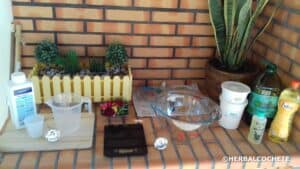
Heat the Oils
- Heat all your oils in a pyrex bowl at the microwave until the palm oil melts. Use 1 min periods and check temperature. The oils shouldn't overheat (> 60ºC or 140ºF)700 g extra virgin olive oil, 300 g refined or organic coconut oil

Make the Lye Water
- Make the lye solution according to How To Make Lye Water. Add the red clay and fine salt before adding the lye. Mix it well until the vapors start to dissipate.400 g distilled water, 4 g fine salt / sodium lactate, 2 tsp red clay, 141 g lye (100% sodium hydroxide)

Make the Soap Batter
- Use as target temperature 30ºC-35ºC for the oil-solution mixture. It can be less than this, but the lye and oils should not have a difference of more than 10ºC between them.
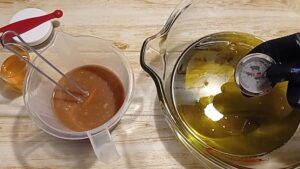
- Mix oils and lye with the immersion blender. The red clay in the lye water may accelerate trace. If it does, be swift with next instructions.
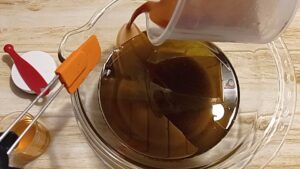
- Reach trace with the immersion blender.
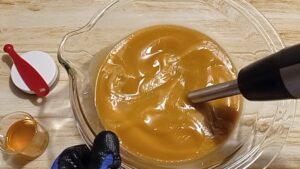
Add After Trace Ingredients
- Add the extracts, the fragrance oil and the poppy seeds in powder form at this moment. Mix with a spoon or spatula. The soap might accelerate at this point, be ready to pour it in your mold afterwards.16 drops grapefruit seed extract (GSE) (anti-oxidant), 50 g horse-chestnut extract, 0.125 g poppy seeds, 26 ml rose fragrance oil
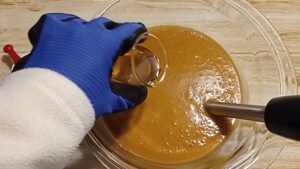
Molding and Curing
- Pour the dough in the large soap mold and sprinkle with alcohol or witch hazel. NOTE: you can see the dough ricing slightly, due to the fragrance oil accelerating compounds, but the soap is still high quality.alcohol or witch hazel to sprinkle

- Decorate the soap top with shapes done with a spoon, and dried flowers or herbs. I've used dried mallow flowers.dried herbs
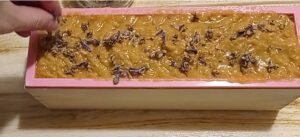
- Let it set for 48 hours.
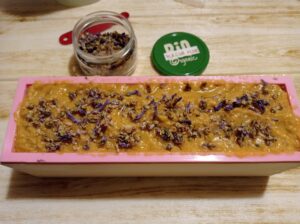
- Learn how to clean all equipment with How to Clean Soap Making Equipment.
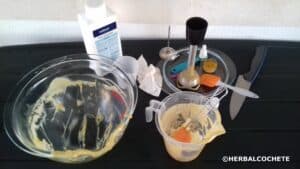
Cutting and Curing the Soap Bars
- Unmold the bulk bar of soap.
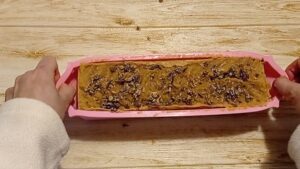
- Cut the bulk bar into small soap bars.
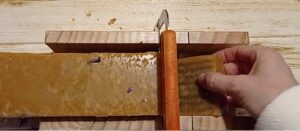
- Let the bars cure for 4 to 6 weeks in a ventilated place. See How To Cure Soap and How Do You Store Homemade Soap? Enjoy your soaps!!
